


Hiveon ASIC — Existing user’s upgrade and setup manual
In this article we’ll continue the topic about Hiveon ASIC firmware installation and show you how to easily update your existing ASICs.
In this part two we’ll discuss the options for:
Updating existing ASICs via Hive OS’s web interface — suitable for those who’re already using Hive with their ASICs Bulk updating existing ASICs — suitable for updating entire farms in a few clicks
If you’re a new user, here’s what part one covered:
Installing using ASICs via web interface — suitable for installing on a handful of machines for users who haven’t used Hive OS before Bulk installation — suitable for installing unto entire farms
Updating using Hive OS’s web interface
Assuming you’re already using Hive OS with your ASICs, you’ll need to update them to the compatible firmware first. If your ASIC model is compatible, you’ll see a yellow Switch text near the OS version at the bottom of your worker Overview page.
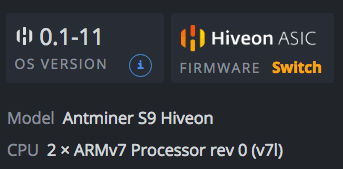
Click it and a new Change ASIC Firmwares context window will pop-up. Then click the Select firmware dropdown list and choose the appropriate firmware version. In this example it’ll be the Antminer-S9-all-Hiveon. Click Apply.
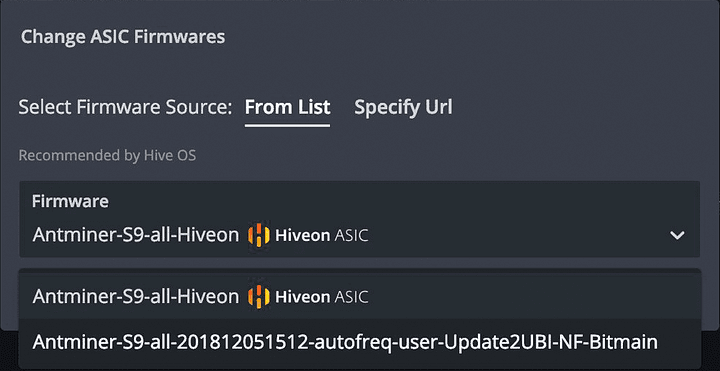
The ASIC will go offline and reboot, then it will re-appear as online shortly and it’s model name will change from Antminer S9 to Antminer S9 Hiveon (from T9 to T9 Hiveon accordingly). The firmware version will also change.

You’re done, now you can configure your ASIC using the auto tuner.
For more details regarding other ASIC installation options, please refer to this GitHub page.
Hive OS web UI auto tuner configuration
Once your ASIC is back online, you can now go into the Overclocking tab to use our pre-created auto tuning profiles.
Attention! In order to use most of these options, you need to have a custom power supply connected to your ASIC. The factory PSU is not powerful enough to handle the load and your ASIC will turn off.

In the Overclock profiles section, choose the profile you want to autotune your ASIC. A small disclaimer first: We don’t recommend choosing Manual mode unless you have sufficient skills in manually fine tuning an ASIC. We won’t be covering the manual procedure in any of our articles as this profile is too difficult to explain in a short comprehensive form.
Then click the Apply Changes button at the bottom of the page and wait for the algorithm to finish auto tuning the ASIC. This may take up to an hour depending on the selected profile. Your hasrates may wildly fluctuate during the process — this is normal.
And you’re done! Happy mining!
Bulk Update
Assuming you’re already using Hive OS with your ASICs, you’ll need to update them to the compatible firmware first. The Hiveon ASIC firmware is available currently only for Antminer S9, S9i, S9j, T9 and T9+ with other models coming soon.
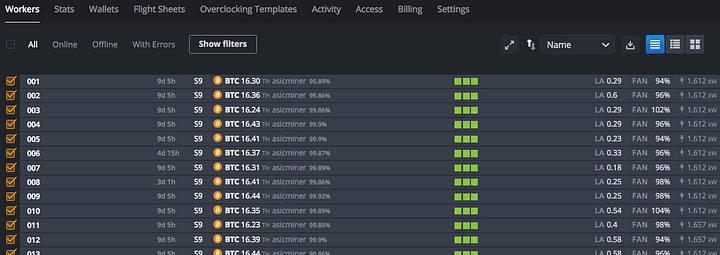
In the Workers tab, select the workers you want to update. You’ll see several actions appear in the top right corner of the screen.

Click the ASIC Firmware button and a new Change ASIC Firmwares context window will pop-up. Then click the Select firmware dropdown list and choose the appropriate firmware version. In this example it’ll be the Antminer-S9-all-Hiveon. Click Apply.

The ASICs will go offline and reboot, then they will re-appear as online shortly and their model names will change from Antminer S9 to Antminer S9 Hiveon (from T9 to T9 Hiveon accordingly). The firmware version will also change.

You’re done, now you can configure your ASIC using the auto tuner.
For more details regarding other ASIC installation options, please refer to this GitHub page.
Hive OS web UI auto tuner configuration
Once your ASICs were successfully flashed, you can then set our pre-created auto tuning profiles. There you can choose the Profile that suits your needs best. A small disclaimer first: We don’t recommend choosing Manual mode unless you have sufficient skills in manually fine tuning an ASIC. We won’t be covering the manual procedure in any of our articles as this profile is too difficult to explain in a short comprehensive form.
**Attention! **In order to use most of these options, you need to have a custom power supply connected to your ASIC. The factory PSU is not powerful enough to handle the load and your ASIC will turn off.
In the Worker tab, select the workers you want to run the auto tuning script on.
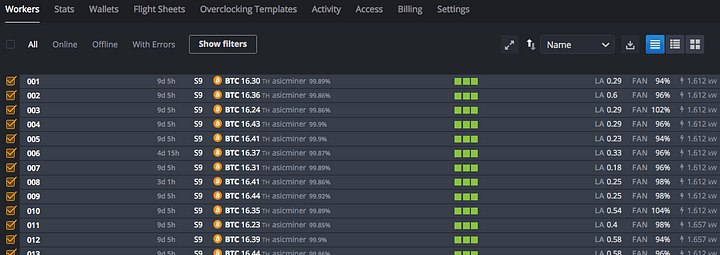
You’ll see several actions appear in the top right corner of the screen. Click the Overclocking button and a new context window will appear.

Select the profile you want then click the Apply Changes button at the bottom of the window and wait for the algorithm to finish auto tuning the ASIC. This may take up to an hour depending on the selected profile. Your hasrates may wildly fluctuate during the process — this is normal.
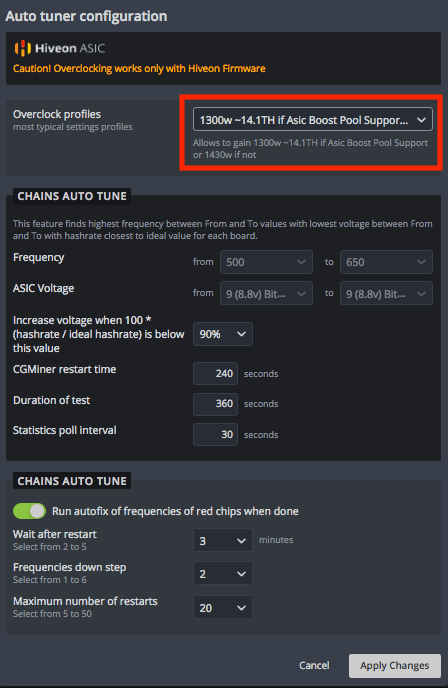
And you’re all done! Congratulations and happy mining!